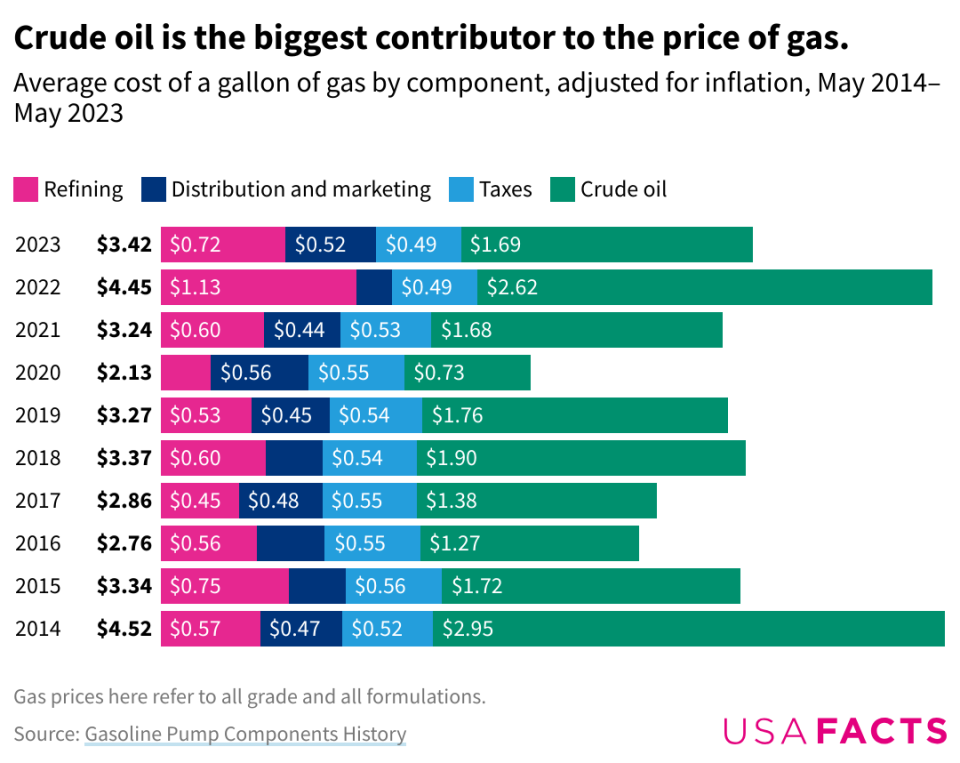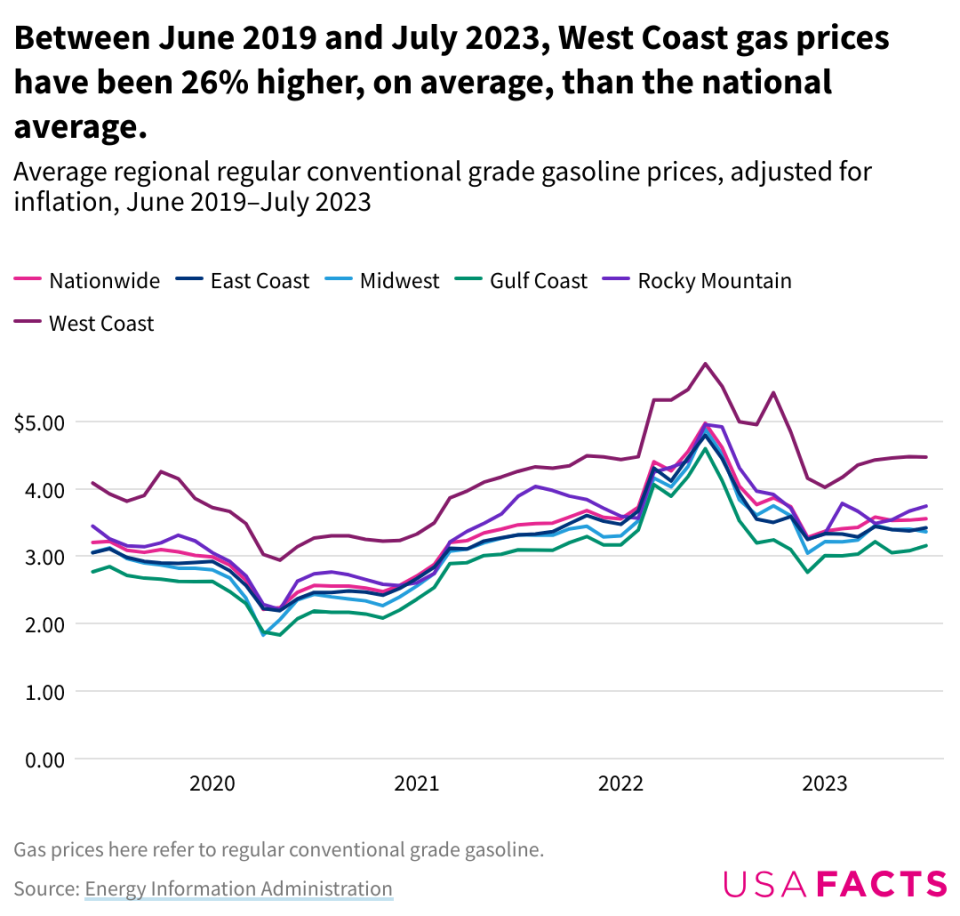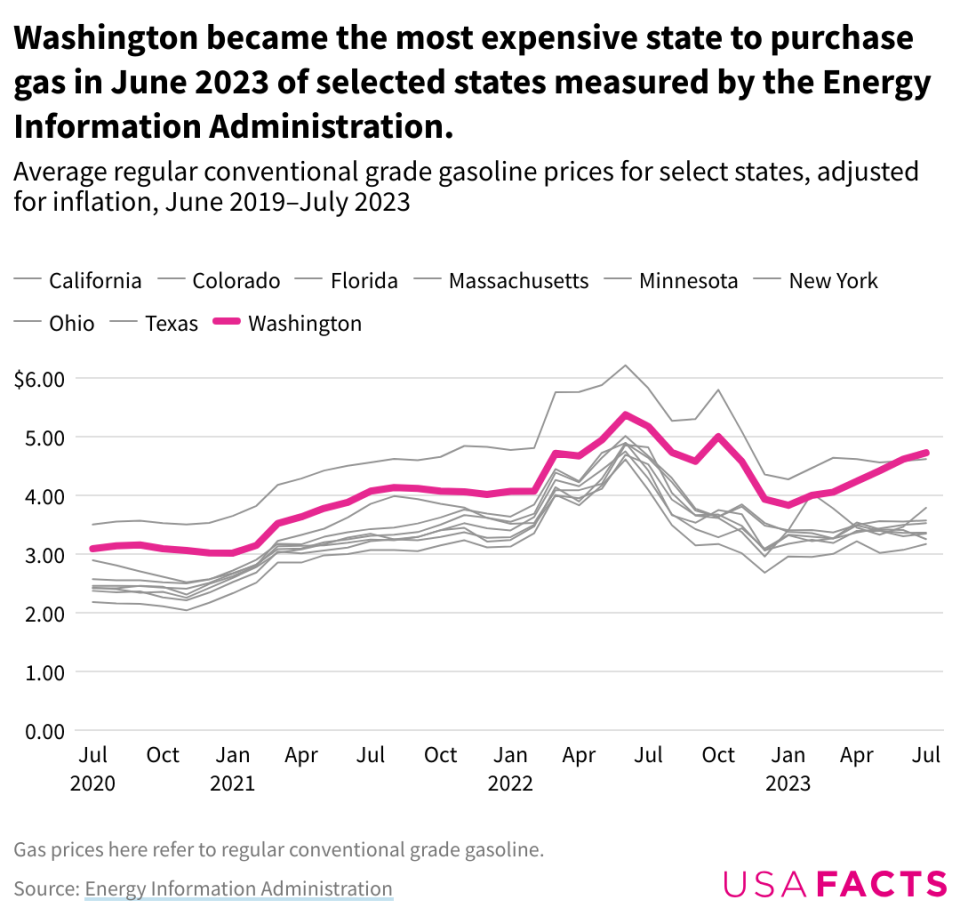Four key factors affect the price of gas. Here's how, and why gas prices vary by state
Drivers in the United States know that the price of gasoline is almost constantly changing. But what’s the cause of this unpredictability? The factors can be as local as the nearest gas station and as global as decisions made halfway around the world.
What goes into gas prices?
The retail price of gas depends on four factors: the cost of crude oil, refining costs and profits, distribution and marketing costs and profits, and taxes, according to the US Energy Information Administration (EIA). Of these, the price of crude oil is the single biggest contributor to the retail price of gasoline.

Who controls gas prices?
Every nation that produces and exports oil can influence the global market price of oil in some way. However, the Organization of the Petroleum Exporting Countries (OPEC) — a group of 13 major oil-exporting member nations across the Middle East, North and Central Africa, and South America — plays a significant role in crude oil prices, and by extension, gas prices.
OPEC members essentially manage the production of oil by establishing crude oil quotas, some of which have the largest oil reserves in the world, according to EIA. To put this into perspective, OPEC member countries produce an estimated 40% of the world’s crude oil supply and export about 60% of petroleum traded internationally. So, when OPEC cuts its crude oil production targets, retail gas prices go up due to reduced supply.
Of course, there are other nations and regions outside of OPEC that produce and export crude oil, including parts of the former Soviet Union and the North Sea. These non-OPEC oil exporters account for about 60% of the world’s oil production. Unlike OPEC member nations, non-OPEC producers have limited influence over the global market, opting to set their prices based on global demand.
Why do gas prices rise?
In general, gas prices rise when oil supply decreases, according to EIA. Any disruptions to crude oil supplies, refinery operations, or gas pipeline deliveries can result in fluctuating fuel costs.
Other factors that contribute to rising gas prices include:
Proximity to supply (the farther the gasoline needs to be transported, the higher the price)
Competition with other gas stations (the fewer gas stations there are in a certain area, the higher the price)
Environmental programs (some gasoline needs to be reformulated to meet a state’s environmental standards, which can make production and distribution of gas more expensive)
Gas prices also tend to change seasonally; as more people travel during the spring and summer, the cost of fuel increases to meet the higher demand.
Are gas prices going down?
It depends. As of July 24, 2023, the average price per gallon of gasoline nationwide increased by 1.2% over the past week, according to EIA data. Average gas prices rose by 2.3% on the East Coast and by 3.4% along the Gulf Coast. The average price per gallon of gas declined in all other regions of the US. Average prices decreased by 0.4% on the West Coast and by 0.3% in the Midwest and Rocky Mountains.
However, compared to July 2022, nationwide gas prices have gone down 23% after adjusting for inflation, and have decreased at similar rates across all US regions. Compared to July 2019, gas prices have increased between 10-15% after adjusting for inflation across US regions.

Which states have the highest and lowest gas prices?
The EIA only collects localized data for a select number of states and cities, so it’s difficult to determine exactly where gas prices are highest and lowest in the countries from such limited data.
However, from this limited dataset, Washington has the highest gas prices out of any measured state, with an average of $4.72 per gallon in July 2023, according to EIA. In recent years, California has had the nation’s highest gas prices. But as of July 2023, California ranks second-highest at $4.62 per gallon, followed by Colorado at $3.79 per gallon, New York at $3.57 per gallon, and Massachusetts at $3.53 per gallon.
On the opposite end, Texas had the lowest gas prices of any recorded state in July 2023 at $3.17 per gallon.

Why do gas prices vary by state?
There are several key factors that result in a variation in gas prices across states. One of the main factors is taxes. Each state sets its own taxes on gasoline, which can vary greatly. As of July 2023, California has a 2.25% sales tax rate on gasoline, while Texas levies a flat tax of $0.20 per gallon of gas.
The price of gas also varies by state because some states require gasoline to be reformulated to meet specific environmental standards. For example, relatively few refineries produce California’s gasoline, which has more restrictions than the federal government’s gasoline program, whereas Texas and other Southern states have a large network of refineries within their territory.
Another big reason for the difference in gas prices is transportation costs. It costs money to move gas from refineries to gas stations, and those costs change depending on the transportation infrastructure between states. For example, while Eastern and Midwestern states don’t have as many refineries as the Southern US, they are connected to a more extensive network of gas pipelines, which lowers transportation costs compared to Western states.
While there are several other regulatory factors that contribute to differences between states, these three factors help explain the variation in gas prices.
Where did this data come from?
This data came from the EIA based on surveys sent to companies selling gas at retail locations nationwide. The companies sampled are required by law to report the cash pump price for self-serve unleaded gasoline (or the credit card price if the station does not accept cash).
Learn more about transportation and infrastructure from USAFacts, and get the data delivered to your inbox by signing up for our newsletter.
This article originally appeared on Bartlesville Examiner-Enterprise: What causes high gas prices? Here's a rundown of the factors in play

